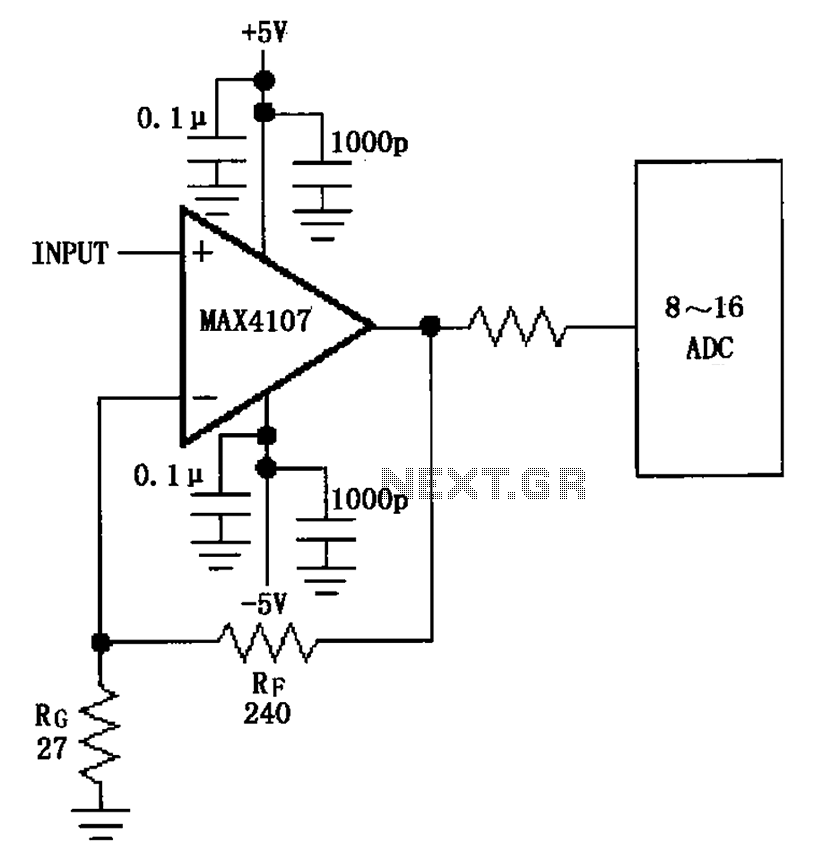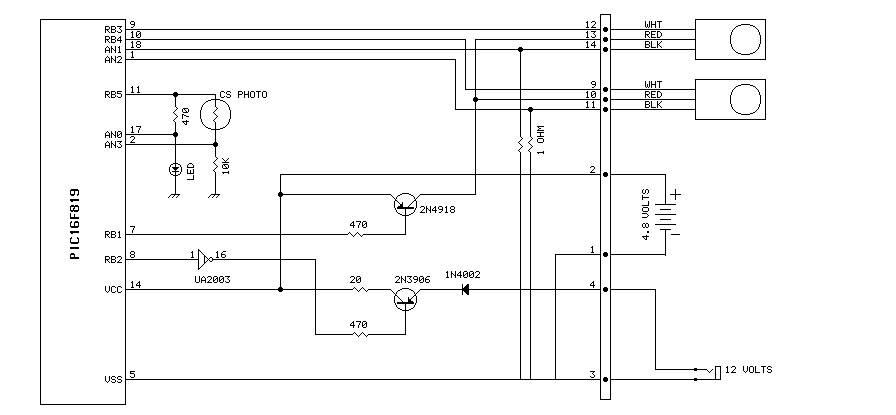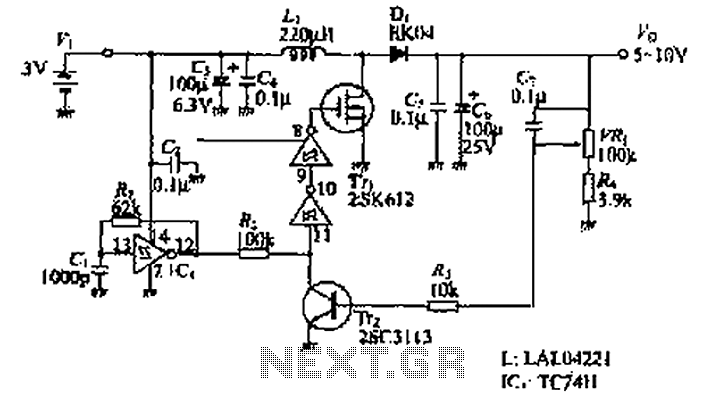
Noninverting gain circuit diagram by the MAX4107

The inverting gain circuit utilizing the MAX4107 is configured as an ADC input buffer. The gain of the amplifier is established by the ratio of resistors RF and RG, which set the gain figure to approximately 10.
The inverting gain circuit using the MAX4107 operational amplifier is designed to function as an analog-to-digital converter (ADC) input buffer. The circuit configuration allows for the amplification of input signals while maintaining a high input impedance and low output impedance, which is crucial for interfacing with ADCs.
In this configuration, the gain of the amplifier is determined by the feedback resistor (RF) and the input resistor (RG). The relationship governing the gain (Av) of the inverting amplifier is given by the formula: Av = -RF/RG. For this particular design, the resistors are selected such that the gain is set to approximately 10. This means that for every 1V input signal, the output will be -10V, inverting the phase of the signal while amplifying its magnitude.
The choice of RF and RG values must be made carefully to ensure stability and linearity of the amplifier. Additionally, the MAX4107 is known for its low noise and high speed, making it suitable for high-frequency applications. Proper bypass capacitors should be placed close to the power supply pins of the MAX4107 to minimize power supply noise and ensure stable operation.
In summary, this inverting gain circuit effectively amplifies signals for ADC applications, providing a reliable interface with the necessary gain characteristics. As shown in FIG inverting gain circuit from the MAX4107 configured as ADC input buffers. Amplifier gain is determined by the ratio of RF and RG, resistors set the gain figure o f about 10.
The inverting gain circuit using the MAX4107 operational amplifier is designed to function as an analog-to-digital converter (ADC) input buffer. The circuit configuration allows for the amplification of input signals while maintaining a high input impedance and low output impedance, which is crucial for interfacing with ADCs.
In this configuration, the gain of the amplifier is determined by the feedback resistor (RF) and the input resistor (RG). The relationship governing the gain (Av) of the inverting amplifier is given by the formula: Av = -RF/RG. For this particular design, the resistors are selected such that the gain is set to approximately 10. This means that for every 1V input signal, the output will be -10V, inverting the phase of the signal while amplifying its magnitude.
The choice of RF and RG values must be made carefully to ensure stability and linearity of the amplifier. Additionally, the MAX4107 is known for its low noise and high speed, making it suitable for high-frequency applications. Proper bypass capacitors should be placed close to the power supply pins of the MAX4107 to minimize power supply noise and ensure stable operation.
In summary, this inverting gain circuit effectively amplifies signals for ADC applications, providing a reliable interface with the necessary gain characteristics. As shown in FIG inverting gain circuit from the MAX4107 configured as ADC input buffers. Amplifier gain is determined by the ratio of RF and RG, resistors set the gain figure o f about 10.





